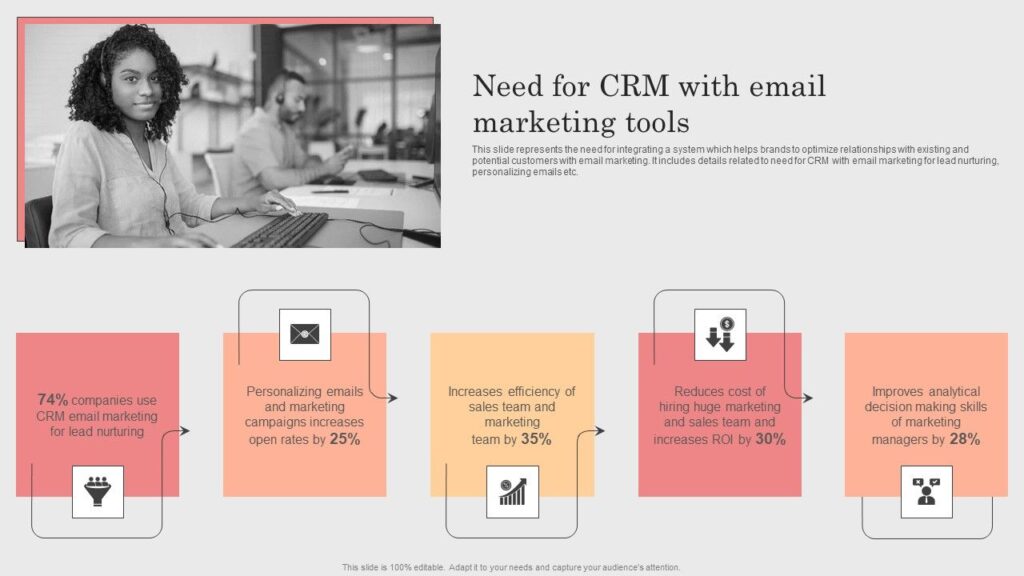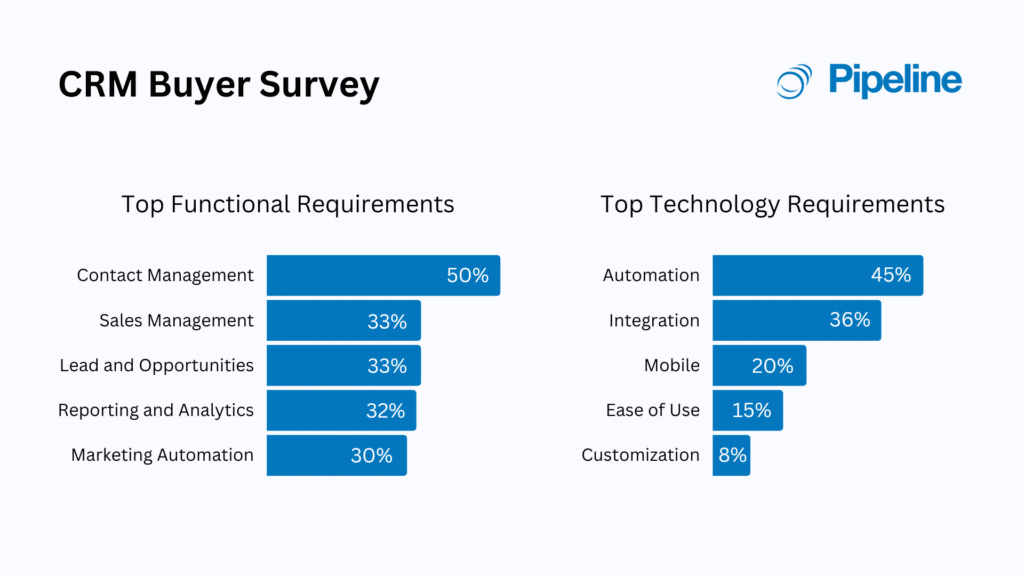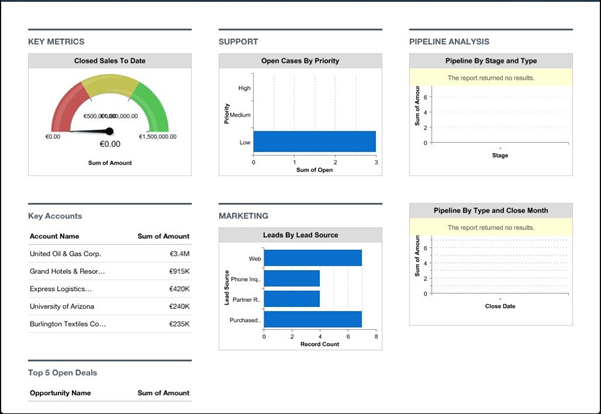
The Ultimate CRM Marketing Integration Guide: Boost Your ROI and Customer Engagement
In today’s hyper-competitive business landscape, the ability to understand and connect with your customers is paramount. This is where the power of CRM (Customer Relationship Management) marketing integration comes into play. This comprehensive guide will walk you through everything you need to know about seamlessly integrating your CRM system with your marketing efforts, unlocking a wealth of benefits that can transform your business.
What is CRM Marketing Integration?
At its core, CRM marketing integration is the process of connecting your CRM system with your marketing automation tools, email marketing platforms, social media management software, and other marketing channels. This integration allows for a two-way flow of data, enabling you to:
- Gain a 360-degree view of your customers.
- Personalize marketing campaigns.
- Automate marketing tasks.
- Improve lead generation and nurturing.
- Measure and optimize marketing performance.
Without proper integration, your sales and marketing teams might be operating in silos, leading to inefficiencies, data discrepancies, and missed opportunities. CRM marketing integration bridges this gap, fostering collaboration and ensuring that everyone is on the same page.
Why is CRM Marketing Integration Important?
The benefits of integrating your CRM and marketing efforts are numerous and can have a significant impact on your bottom line. Here are some of the key advantages:
Enhanced Customer Understanding
By integrating your CRM with your marketing tools, you can gather a wealth of information about your customers, including their demographics, purchase history, website activity, and engagement with your marketing campaigns. This comprehensive view allows you to create detailed customer profiles, segment your audience effectively, and tailor your marketing messages to their specific needs and preferences.
Improved Personalization
Personalization is no longer a luxury; it’s an expectation. Customers want to feel understood and valued. With CRM marketing integration, you can personalize your marketing campaigns based on customer data, such as their name, purchase history, and interests. This can include personalized email subject lines, product recommendations, and website content, leading to higher engagement rates and conversions.
Increased Efficiency and Automation
Integrating your CRM with your marketing automation tools allows you to automate many time-consuming marketing tasks, such as lead scoring, email marketing, and social media posting. This frees up your marketing team to focus on more strategic initiatives, such as content creation and campaign planning, ultimately boosting productivity and efficiency.
Better Lead Generation and Nurturing
CRM marketing integration can help you generate and nurture leads more effectively. By tracking website activity, email opens, and other engagement metrics, you can identify qualified leads and segment them based on their behavior. You can then use marketing automation to nurture these leads with targeted content and offers, guiding them through the sales funnel and increasing your conversion rates.
Enhanced Sales and Marketing Alignment
When sales and marketing teams are aligned, they work together more effectively to achieve common goals. CRM marketing integration fosters this alignment by providing both teams with access to the same customer data and insights. This allows them to collaborate more effectively, share information seamlessly, and ensure that their efforts are aligned, leading to a more cohesive customer experience.
Improved ROI and Revenue Growth
By optimizing your marketing efforts, personalizing your customer interactions, and streamlining your sales processes, CRM marketing integration can significantly improve your return on investment (ROI) and drive revenue growth. This is achieved through increased conversion rates, higher customer lifetime value, and reduced marketing costs.
Key Components of CRM Marketing Integration
Successful CRM marketing integration involves several key components that work together to create a seamless and effective system:
CRM System
This is the central hub for all your customer data, including contact information, interactions, purchase history, and more. Popular CRM systems include Salesforce, HubSpot, Zoho CRM, and Microsoft Dynamics 365.
Marketing Automation Platform
This platform automates various marketing tasks, such as email marketing, social media posting, lead nurturing, and campaign management. Examples include HubSpot Marketing Hub, Marketo, Pardot, and Mailchimp.
Email Marketing Software
This software is used to create and send email campaigns, track email performance, and manage email lists. Common options include Mailchimp, Constant Contact, and Sendinblue.
Social Media Management Tools
These tools help you manage your social media presence, schedule posts, monitor social media activity, and track social media performance. Popular choices include Hootsuite, Buffer, and Sprout Social.
Analytics and Reporting Tools
These tools track and analyze your marketing performance, providing insights into what’s working and what’s not. They can also help you measure the ROI of your marketing campaigns. Examples include Google Analytics, Adobe Analytics, and Tableau.
Integration Methods
There are several ways to integrate your CRM with your marketing tools, including:
- Native Integrations: Many CRM and marketing platforms offer native integrations, which are pre-built connections that allow you to easily connect the two systems.
- API Integrations: APIs (Application Programming Interfaces) allow you to connect your CRM and marketing tools using custom code. This offers more flexibility and control over the integration process.
- Third-Party Integration Platforms: These platforms, such as Zapier and Integromat, provide a no-code or low-code approach to integration, allowing you to connect your CRM and marketing tools without writing any code.
Step-by-Step Guide to CRM Marketing Integration
Successfully integrating your CRM with your marketing efforts requires a well-defined plan and a step-by-step approach. Here’s a comprehensive guide to help you through the process:
1. Define Your Goals and Objectives
Before you begin the integration process, it’s crucial to define your goals and objectives. What do you want to achieve with CRM marketing integration? Are you looking to improve lead generation, increase conversion rates, or enhance customer engagement? Clearly defined goals will help you prioritize your efforts and measure your success.
2. Choose the Right CRM and Marketing Tools
If you haven’t already, choose the CRM and marketing tools that best meet your business needs. Consider factors such as features, pricing, ease of use, and integration capabilities. Research different options and compare their features to determine which ones align with your goals and objectives.
3. Plan Your Integration Strategy
Develop a detailed integration strategy that outlines the specific data points you want to share between your CRM and marketing tools, the integration methods you’ll use, and the workflows you’ll automate. This plan should also include a timeline and a budget.
4. Choose Your Integration Method
Select the integration method that best suits your needs and technical expertise. If you’re not comfortable with coding, consider using native integrations or a third-party integration platform. If you have the technical resources, you can use APIs to build a custom integration.
5. Configure the Integration
Follow the instructions provided by your CRM and marketing tool providers to configure the integration. This may involve connecting your accounts, mapping data fields, and setting up workflows. Carefully test the integration to ensure that data is flowing correctly between the two systems.
6. Map Data Fields
One of the most critical steps in the integration process is mapping data fields. This involves matching the data fields in your CRM with the corresponding fields in your marketing tools. For example, you might map the “Email” field in your CRM to the “Email Address” field in your email marketing software. Accurate data mapping is essential for ensuring that data is transferred correctly and that your marketing campaigns are personalized effectively.
7. Set Up Workflows and Automations
Once you’ve integrated your CRM and marketing tools, you can set up workflows and automations to streamline your marketing processes. For example, you can automatically add new leads from your CRM to your email marketing list or trigger a follow-up email when a lead downloads a specific piece of content. Automation can save you time and effort while improving the efficiency of your marketing campaigns.
8. Test and Refine Your Integration
After setting up the integration, thoroughly test it to ensure that it’s working correctly. Send test emails, track website activity, and monitor data flow to identify any issues. Make adjustments as needed to optimize the integration and ensure that it’s meeting your goals.
9. Train Your Team
Provide training to your sales and marketing teams on how to use the integrated system. Explain the benefits of the integration, how to access and use the data, and how to leverage the automation features. This will ensure that everyone is on the same page and can effectively utilize the integrated system.
10. Monitor and Analyze Results
Regularly monitor and analyze your marketing performance to measure the impact of the integration. Track key metrics, such as lead generation, conversion rates, and ROI. Use these insights to optimize your marketing campaigns and make adjustments to the integration as needed.
Best Practices for CRM Marketing Integration
To maximize the benefits of CRM marketing integration, follow these best practices:
1. Start Small
Don’t try to integrate everything at once. Start with a few key integrations and workflows and gradually expand as you gain experience and confidence.
2. Prioritize Data Quality
Ensure that your CRM data is clean, accurate, and up-to-date. This will help you personalize your marketing campaigns effectively and avoid sending incorrect or irrelevant information.
3. Segment Your Audience
Segment your audience based on their demographics, behavior, and interests to create targeted marketing campaigns. This will help you deliver more relevant content and increase engagement.
4. Personalize Your Campaigns
Use customer data to personalize your marketing campaigns, such as email subject lines, product recommendations, and website content. This will make your customers feel valued and increase the likelihood of conversions.
5. Automate Tasks Where Possible
Automate repetitive tasks, such as lead scoring, email marketing, and social media posting, to save time and effort.
6. Align Sales and Marketing
Foster collaboration between your sales and marketing teams by sharing data and insights. This will help them work together more effectively and ensure a cohesive customer experience.
7. Track and Measure Results
Regularly track and measure your marketing performance to identify what’s working and what’s not. Use these insights to optimize your campaigns and improve your ROI.
8. Regularly Review and Optimize
The marketing landscape is constantly evolving, so it’s essential to regularly review and optimize your CRM marketing integration. As your business grows and your needs change, you may need to adjust your integration strategy to ensure that it’s still meeting your goals.
Common Challenges and How to Overcome Them
While CRM marketing integration offers numerous benefits, it can also present some challenges. Here are some common challenges and how to overcome them:
Data Silos
Data silos can occur when data is stored in different systems and is not accessible to all teams. To overcome this, ensure that all teams have access to the same customer data and that data is shared seamlessly between your CRM and marketing tools.
Data Quality Issues
Poor data quality can lead to inaccurate insights and ineffective marketing campaigns. To address this, implement data cleansing and validation processes to ensure that your CRM data is clean, accurate, and up-to-date.
Lack of Alignment Between Sales and Marketing
When sales and marketing teams are not aligned, they may work at odds with each other, leading to inefficiencies and missed opportunities. To foster alignment, encourage collaboration, share data and insights, and establish common goals.
Technical Complexity
Integrating your CRM and marketing tools can be technically complex, especially if you’re using multiple systems. To simplify the process, consider using native integrations or a third-party integration platform. If you need to build a custom integration, ensure that you have the necessary technical resources.
Resistance to Change
Employees may resist adopting new systems or workflows. To overcome this, provide training, communicate the benefits of the integration, and involve employees in the implementation process.
Real-World Examples of Successful CRM Marketing Integration
Let’s look at a few examples of how businesses have successfully implemented CRM marketing integration:
Example 1: E-commerce Retailer
An e-commerce retailer integrated its CRM with its email marketing platform to personalize its email campaigns. By tracking customer purchase history and website activity in the CRM, the retailer could send targeted product recommendations, abandoned cart emails, and exclusive offers to its customers. This resulted in a significant increase in conversion rates and revenue.
Example 2: SaaS Company
A SaaS company integrated its CRM with its marketing automation platform to nurture leads through the sales funnel. The company used the CRM to track lead behavior, such as website visits, content downloads, and product demos. Based on this behavior, the marketing automation platform sent targeted emails and offers, guiding leads through the sales process and increasing conversion rates.
Example 3: Financial Services Firm
A financial services firm integrated its CRM with its social media management tools to manage its social media presence and track social media engagement. The firm used the CRM to segment its audience based on their financial goals and interests. Then, it used the social media management tools to create and schedule targeted social media posts and track engagement metrics. This resulted in increased brand awareness and lead generation.
The Future of CRM Marketing Integration
As technology continues to evolve, the future of CRM marketing integration looks bright. Here are some trends to watch:
- Artificial Intelligence (AI): AI will play an increasingly important role in CRM marketing integration, enabling businesses to automate more tasks, personalize campaigns more effectively, and gain deeper insights into customer behavior.
- Machine Learning (ML): ML will be used to analyze customer data and predict future behavior, allowing businesses to proactively engage with customers and improve their customer experience.
- Hyper-Personalization: Businesses will move towards hyper-personalization, tailoring their marketing messages to each individual customer based on their specific needs and preferences.
- Cross-Channel Marketing: Businesses will integrate their CRM with all their marketing channels, including email, social media, SMS, and website, to create a seamless and consistent customer experience across all touchpoints.
Conclusion
CRM marketing integration is a powerful strategy that can transform your business. By connecting your CRM with your marketing tools, you can gain a 360-degree view of your customers, personalize your marketing campaigns, automate your marketing tasks, improve lead generation and nurturing, and enhance your sales and marketing alignment. By following the steps outlined in this guide and adopting the best practices, you can successfully integrate your CRM with your marketing efforts and achieve significant improvements in your ROI and customer engagement. Embrace the power of integration and unlock the full potential of your marketing efforts.
Investing in CRM marketing integration is a strategic move that can yield substantial returns. By understanding your customers better, tailoring your marketing messages, and streamlining your processes, you can create a more engaging and effective customer experience. This, in turn, can lead to increased sales, improved customer loyalty, and sustainable business growth. Don’t miss out on the opportunity to leverage this powerful tool to propel your business forward.



